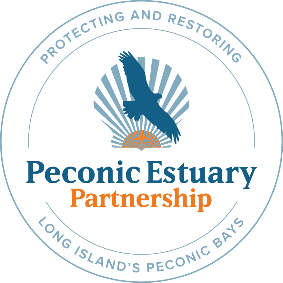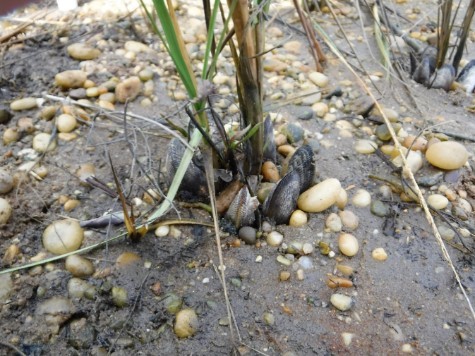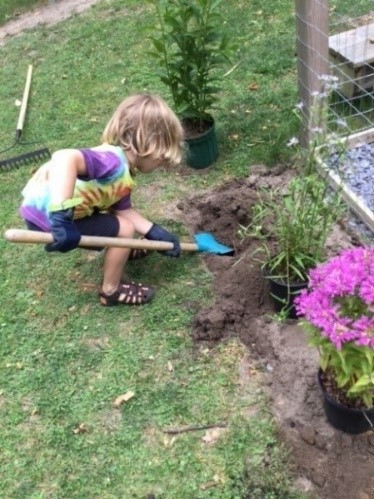About the Peconic Estuary Partnership(formerly known as the Peconic Estuary Program) In 1992, the Peconic Estuary received the designation as an “Estuary of National Significance” by the U.S. Environmental Protection Agency and the Peconic Estuary Partnership (PEP) was established. PEP is a collaborative partnership of local, state, and federal governments, citizens, environmental groups, businesses, industries, and academic institutions. PEP’s staff and partners support monitoring, research, restoration, collaboration and education to address priority issues within the Peconic Estuary and its watershed. Comprehensive Conservation and Management Plan (CCMP) Update CompleteThe Comprehensive Conservation and Management Plan (CCMP) is the blueprint by which the PEP directs its efforts and resources to protect and restore the Peconic Estuary and its watershed. The initial CCMP was written in 2001. PEP has spent the past two years coordinating with stakeholders, including business owners, concerned citizens, local organizations, experts and government officials, to develop fresh goals and actions for the next decade. The updated CCMP focuses on clean waters, healthy habitats and wildlife, strong partnerships, and resilient communities prepared for climate change. The updated CCMP was approved by the United States Environmental Protection Agency on October 29, 2020 and can be found here. Total Maximum Daily Load for Nitrogen for the Peconic EstuaryIn 2007, New York State developed a nitrogen pollutant load limit for the Peconic Estuary called the Total Maximum Daily Load for Nitrogen for the Peconic Estuary (TMDL). The TMDL outlines the maximum amount of nitrogen the estuary can receive and still meet water quality standards. TMDL plans:
PEP was influential in moving forward the 2016 Riverhead Sewage Treatment Plant upgrade and reuse project in order to meet the TMDL requirements in the western segment of the Peconic Estuary. After upgrades to the Riverhead plant, highly treated wastewater is now used to irrigate the Indian Island Golf Course, reducing overall water use and diverting approximately 1.4 tons of nitrogen per year from entering the Peconic Estuary via the Riverhead Sewage Treatment plant outfall pipe. This project is an excellent example of how water reuse can be used to reduce nitrogen from entering Long Island’s embayments. Peconic Estuary Solute Transport ModelWith funding from NYSDEC, the PEP and the United States Geological Survey (USGS) are developing a Solute Transport Model for nitrogen in the Peconic Estuary. The model looks at water table fluctuations over time, water use, and nitrogen loading—as a function of changing land use and atmospheric deposition rates—from the early 1900’s through the present. The objective of the model is to understand historical and current nitrogen loads to the Peconic watershed, which will be used to guide local, state and regional management actions. The model is expected to be complete by Spring 2021. Living Shoreline Nutrient Bioextraction Pilot ProjectIn coordination with the Suffolk County Cornell Cooperative Extension Marine Program, PEP is working on a pilot project to create a living shoreline at the Suffolk County Marine Environmental Learning Center. A living shoreline is a protected coastal edge made of natural materials such as plants, sand, or rock and is designed to mimic a natural shoreline. Living shorelines provide wildlife habitat, as well as natural resilience to communities near the waterfront. Studies have shown that natural shorelines are more protective during heavy storms because they disperse the waves’ energy. The living shoreline for this project includes intermittent patches of cord grass, a native plant found in coastal salt marshes, and ribbed mussels. Cord grass was planted in the pilot area where they developed an extensive root system that not only keeps the sediment intact, preventing erosion, but also provides the filtration of nutrients and pollution before it enters the bays. Ribbed mussels are an integral part of the salt marsh complex, providing resilience to the seaward edge of the marsh and improve water quality through filter-feeding. The pilot project will monitor the effectiveness of cord grass and ribbed mussels to mitigate nitrogen pollution in the Peconic Estuary. This project will be a model for restoring and protecting the coastline to mitigate coastal erosion, allowing natural processes that trap sediment and filter runoff while maintaining the beach and wetland habitats. The project is due to be completed by September 2021.
Ribbed mussels and cord grass. Photo Credit: Cornell Cooperative Extension Rain Garden Stormwater Treatment ProjectThe Village of Sag Harbor, with help from PEP, is implementing a water quality improvement project at Havens Beach to remove pollution from stormwater. Two rain gardens were built to treat stormwater that would have otherwise flowed directly into Sag Harbor Bay. Rain gardens are comprised of native plants planted in a small depression or on a slope and is designed to temporarily hold and allow the rainwater from roofs, driveways, patios and lawns to soak into the ground. This project will reduce the amount of nitrogen pollutant to Sag Harbor Bay and improve the overall health of the Peconic Estuary.
Completed rain garden at Havens Beach. Photo Credit: Casandra Castano Nitrogen Assessment ProjectPEP is funding a Nitrogen Assessment Project and hired Anchor QEA LLC to assess the cost, per pound, of nitrogen removal for various nitrogen reduction best management practices currently being employed throughout the country. This project will result in a decision-making tool to be used to determine the most cost-effective ways to reduce nitrogen on a subwatershed basis in the Peconic Estuary. The project is expected to be completed in the Fall 2021. Subwatershed Management Plans for the Peconic EstuaryPEP has developed 12 Subwatershed Management Plans for the Peconic Estuary that identify cost effective strategies to help reduce pathogen and stormwater runoff pollution. Successful implementation of these plans will help reduce stormwater pollution and improve overall water quality conditions, resulting in increased shellfish harvesting, expanded eelgrass habitat, and improvements to degraded marsh areas. PEP is working on implementing projects from these plans in the following East End municipalities:
Peconic Estuary Protection Committee Intermunicipal AgreementTo improve collaboration on stormwater pollution mitigation, PEP initiated the development of the Peconic Estuary Protection Committee, which is the result of an intermunicipal agreement to allow for the effective and resource efficient coordination between Suffolk County, the New York State Department of Transportation, the six Towns within the Peconic Estuary watershed and the Villages of Greenport, North Haven, and Sag Harbor. The Committee leverages municipal resources and manages pollutant sources including stormwater runoff, septic system discharges, agricultural and residential fertilization, groundwater flows, illegal dumping, floatable debris and boat waste. The Committee focuses efforts on compliance with EPA’s Clean Water Act and New York State’s Phase II stormwater regulations for municipal separate storm sewer systems (MS4s) to achieve the goals of the PEP’s CCMP. Homeowners Rewards ProgramThe PEP Homeowner Rewards Program continues to provide financial rewards for homeowners in the Peconic Estuary watershed who add rain gardens, native plantings, and/or rain barrels to their properties. The PEP website has an interactive tool and plant database to help individuals and organizations plan eco-friendly landscaping projects that use native plants which reduce nitrogen and other sources of pollution. To date, 68,354 square feet of native plant gardens, 3,300 square feet of rain gardens, and 71 rain barrels have been installed. You can learn more about the program and apply online at PEP’s Homeowner Rewards Program webpage.
Child helping to plant a native plant garden through the Homeowners Rewards Program. Photo credit: Maria Dianora Agriculture Stewardship ProgramThe mission of the Agricultural Stewardship Program is to cooperatively develop a strategy to lower nutrient and pesticide loading from farming to the groundwater and surface waters of Suffolk County while maintaining a strong, viable agricultural industry. PEP continues to work with government agencies, non-profit organizations, academic institutions and private farmers on a Natural Resources Conservation Service’s Regional Conservation Partnership Program (RCPP). The RCPP provides technical assistance and financial resources to Suffolk County farmers within the Peconic Estuary and assists in the development and implementation of best management practices (BMPs). BMPs will include methods of reducing nitrogen and pesticide use while still maximizing their efficiency with improved timing, formulations, new products and technologies, water and soil management and the use of new crops/varieties to limit leaching and run-off. These BMPs will improve agricultural efficiencies and protect surface and groundwater quality, soil vitality and wildlife habitat. To sign up for the LINAP Newsletter, visit the LINAP webpage or click here. |







